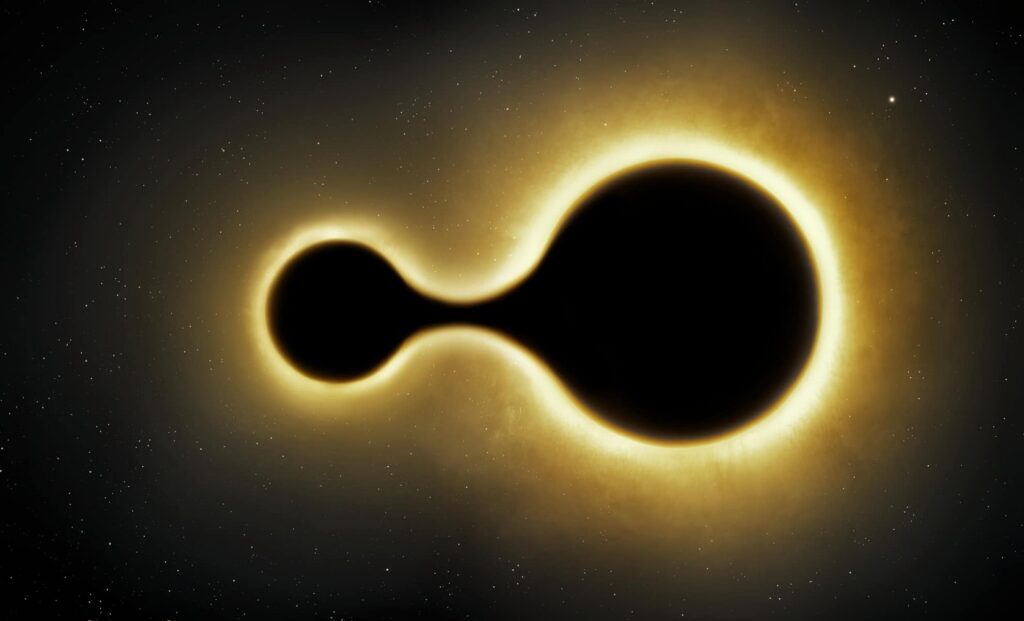The findings, published in The Astrophysical Journal Letters, describe how detailed gravitational wave data from these mergers uncovered signs that at least one black hole in each event had already been part of a previous merger—a clue pointing to what researchers call “hierarchical” black hole systems.
Gravitational waves, first proposed by Einstein in his general theory of relativity, are tiny distortions in spacetime caused by massive celestial events like black hole collisions. Since their first direct detection in 2015, these waves have become vital to astrophysics, acting as messengers from regions of space otherwise invisible. In this case, they’re offering fresh insight into how black holes might form, spin, and repeat the cycle in crowded cosmic environments.
Spin Signatures Suggest Second-Generation Black Holes
On October 11, 2024, scientists observed a merger designated GW241011, located approximately 700 million light-years from Earth. This event involved two black holes—one weighing about 17 times the mass of the Sun, and the other around 7. What made this merger remarkable was the unusually fast spin of the larger black hole, which caused it to deform slightly. According to Discover Magazine, that deformation created a measurable effect in the gravitational waves themselves.
A second merger, GW241110, took place on November 10, 2024, much farther out at a distance of 2.4 billion light-years. The black holes involved were similarly massive—about 16 and 8 solar masses—but what set this one apart was the direction of the larger black hole’s spin. It was rotating counter to its orbital motion, a rare and unexpected trait. Researchers analyzing the gravitational signals used advanced modeling to determine this unusual alignment.
These unique spin configurations are key to identifying second-generation black holes. Both mergers showed a distinct size and spin imbalance between the partners, suggesting that the more massive black holes could themselves be the products of earlier mergers—rather than having formed from collapsing stars.

Mergers Hint at Dense, Dynamic Black Hole Clusters
The presence of second-generation black holes in two separate mergers has led researchers to consider the role of environment. According to the Virgo Collaboration, which operates one of the gravitational wave detectors used in these observations, such repeated mergers are most likely to occur in dense regions of space where black holes are abundant and frequently interact.
Gianluca Gemme, Virgo spokesperson, stated that “the unusual spin configurations observed in GW241011 and GW241110 not only challenge our understanding of black hole formation but also offer compelling evidence for hierarchical mergers in dense cosmic environments.” These environments—such as globular clusters or galactic nuclei—could act as gravitational traps, pulling black holes into close quarters and increasing the likelihood of multiple collisions over time.
This dynamic behavior stands in contrast to traditional models, which often depict black holes as forming in isolated binary systems. The 2024 data supports a different picture—one where black holes may belong to larger, evolving systems that grow through successive mergers.


Gravitational Waves Echo Einstein’s Predictions
Beyond the clues about black hole ancestry, both mergers provided a chance to test Einstein’s theory of general relativity under extreme conditions. In the case of GW241011, researchers observed a distinctive harmonic in the gravitational wave data—a subtle high-frequency signal produced by the significant mass difference between the two black holes.
This harmonic matched theoretical predictions about how black holes distort space when they rotate, confirming elements of both Einstein’s work and that of mathematician Roy Kerr, who studied the behavior of rotating black holes. The detection of this overtone—a kind of gravitational “hum”—served as further proof that Einstein’s equations still hold up in the most violent parts of the universe.
Researchers also noted that fast-spinning black holes, like those observed here, could eventually help test for the existence of theorized elementary particles called ultralight bosons. These particles, if real, might extract rotational energy from black holes. Though the current study does not confirm their presence, it points to future possibilities in high-energy astrophysics.

